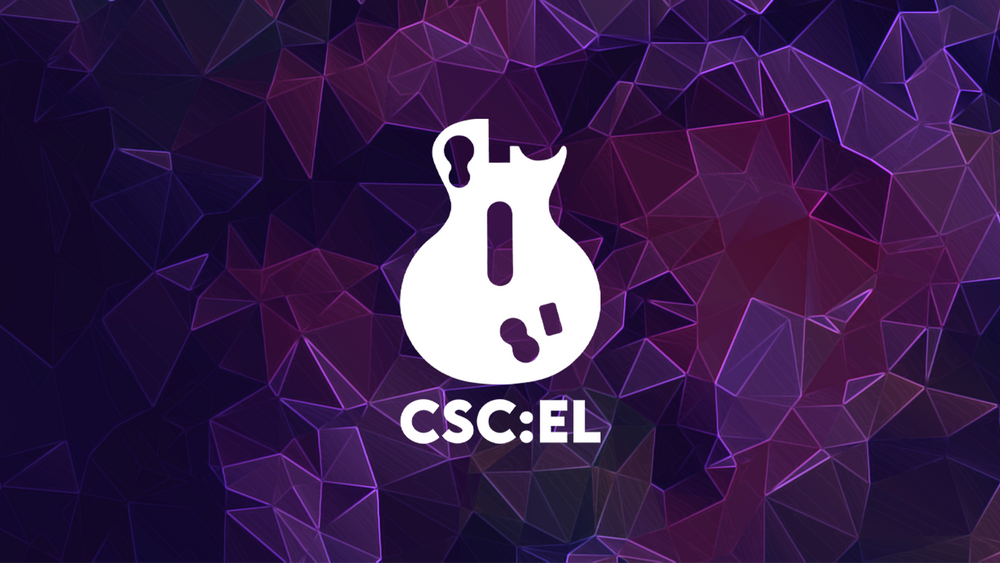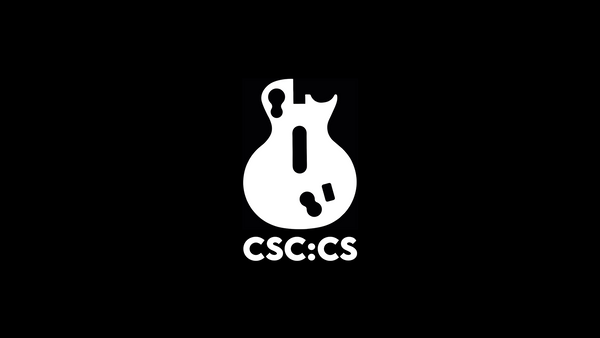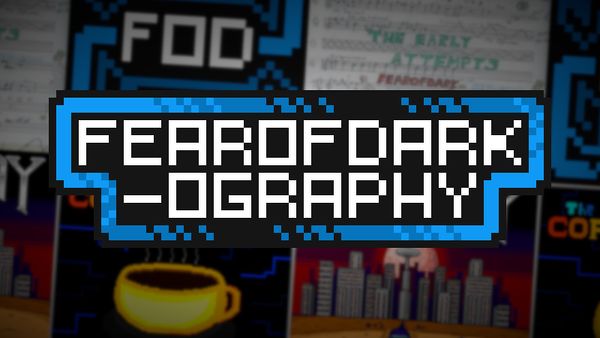CSC Elite League Ruleset
Scheduling
- The group phase will span from Monday, November 2nd, 2020 to Sunday, December 6th, 2020.
- The playoffs will span from Monday, December 7th, 2020 to Sunday, December 20th, 2020.
- Players are responsible for their own match scheduling; they are encouraged to aim for designated streaming time slots, but contestants are free to schedule their match whenever they want. All CSC-streamed matches will have a referee present.
- Games may be reported by a tournament referee, who attends the match as a spectator, administers picks and bans, and records scores. Self administration and reporting of games is also permitted, but must adhere strictly to these guidelines. Any self-reported game that has rule-breaking anomalies (e.g. a song that was banned was picked, wrong order of picks/bans) can be cancelled by either any organizer or the players themselves. A cancelled game has to be redone in its entirety.
- Players have 10 minutes to show up to their scheduled match. If one player fails to appear, then that player will receive zero points, and their opponent will be declared the winner and receive all points for the match. If both players fail to show up in group stage, the match is void and neither player is awarded points. If both players fail to show up in playoffs, the player with the higher seed will advance.
- A player may reschedule a match so long as they request to do so at least 6 hours before match time. A reschedule request may be accepted with less notice, but only if the other player accepts. Otherwise, matches may not be rescheduled, and failing to appear will incur all relevant no-show penalties.
Gameplay
- The tournament will always use the latest version of the Clone Hero Public Test Build (PTB) that is available at match time. This enables necessary online features, such as versus and spectating, and allows for updates which improve competitive play, such as the solo marker rework.
- This may occasionally cause different matches within the same round to be played on different versions of the PTB. If the outcome of a match may have depended on differences between versions, an appeal for a rematch can be made, to be granted by the organizers under exceptional circumstances.
- Players will use online mode, joining a game created by one of the organizers, who will be in spectator mode. One streamer and multiple casters may also join the game in spectator mode. No other spectators are allowed.
- Players should set their profile name to something recognizable and non-offensive. A certain degree of creative freedom is allowed, but above all else, profile names must comply with Twitch's Terms of Service (ToS). During play streamed on the Custom Songs Central Twitch account, players' names must be as they appear in the official tournament standings.
- Players are encouraged to experiment with the "show remote players" toggle setting, which can be leveraged to gain computational performance if needed.
- Any highway scroll speed can be used. However, for logistic reasons, highway length must be at 100% (the default value).
- No modifiers (all taps, all strums, etc.) are allowed. Any exceptions will be explicitly stated by the organizers.
- Every song will be played at 100% speed. Any exceptions will be explicitly stated by the organizers.
- For fretting and strumming, players may only use 5 frets and 1 strumbar. Guitars with 10 frets (such as Rock Band guitars) are permitted, but only 5 of those frets may be used. The underlying specs therein (e.g. mechanical frets, raking strumbar, etc.) are not restricted. For logistic reasons, keyboard gameplay is not allowed.
- However, players may use any means of employing auxiliary features, such as whammy and star power, as long as they are mechanically triggered by the players themselves.
- If a player disconnects from the game, their opponent will gain a point, unless the player disconnected during the first 30 seconds of the song, in which case the round is restarted. To prevent abuse, each player will only be allowed one no-fault disconnection throughout the tournament.
Group stage
- Players will be broken into 4 groups of 6. The groups are determined through a live draw: players were pre-seeded according to a combination of invitational placement and overall tournament skills and belong to one of 6 pots (4 players in each pot). Starting from the Pot A, one player will be picked from each pot sequentially until all groups are made.
- Within these groups, players will all meet each other twice in a round-robin. Therefore, each player will play a total of 10 matches; these will be broken into 2 matches per week for each player.
- For each match, players are awarded 1 point per song victory, and 2 points for overall match victory. Within each group, players will be ranked based on points earned. Once all matches have concluded, the top 2 players from each group (for a total of 8 players) will make it to playoffs.
- If two players have the same amount of points, the tie will be broken in the following order:
- Total series won
- Total songs won
- Head-to-head record
- Sonneborn-Berger score
Chart pools for group stage
- Given that the group stage will span 5 weeks, a different chart pool will be provided every 2 weeks, for a total of 3 different chart pools.
- As the players in the group stage will always be the same, the overall difficulty of the chart selection will be roughly the same throughout.
- All chart pools will be revealed 1 week before they are put to use.
- All group stage chart pools will feature 10 non-tiebreaker charts that will strive for a balance between solo, strum and hybrid picks. The standard spread will be 3 solo/3 strum/4 hybrid, although different spreads between categories may appear.
Tiebreakers for group stage
- A pool of 3 tiebreakers will be used throughout the group stage. It will always consist of 1 solo-oriented hybrid, 1 strum-oriented hybrid and 1 mixed hybrid.
- Tiebreakers will be swapped out for new tiebreakers of the same category for each chart pool change. However, if any tiebreaker does not get played by the time the chart pool is swapped out, it will be kept for the new chart pool.
Group stage - Pool 1 (click image to download)
Group stage - Pool 2 (click image to download)
Playoffs
- This tournament features 8 players in a double-elimination bracket.
- As such, the tournament will be broken into 4 stages: Quarterfinals, Semifinals, Winner's/Loser's Finals and Grand Finals.
- All players start in the winner's bracket, playing a single 1v1 match in the quarterfinals. If a player wins this match, they can advance to the next stage in the same bracket. The loser is then sent to the loser's bracket, where they will compete with a winner of the loser's bracket for that stage. This applies to all stages until grand finals.
- The loser's bracket consists of players who have suffered one loss in the winner's bracket. Any player who loses another match in this bracket will be eliminated.
- The Grand Finals take place between the winner of the winner's finals (A) and the winner of the loser's finals (B). One match is played to start off the Grand Finals. If A wins, A will immediately win the tournament. If B wins, a bracket reset will occur (essentially, A is sent to the loser's bracket). In this case, a second match is played, and the winner of that match will win the tournament.
Chart pools for playoffs
- Given that each week features one stage, there will be a new chart pool for each stage. The first chart pool will be more difficult than those used in the group stage, and each new chart pool will be more difficult than the last.
- All chart pools will be revealed 1 week before they are put to use.
- The number of non-tiebreaker charts in each stage is as follows:
- Quarterfinals (BO7): 10 charts
- Semifinals (BO9): 12 charts
- Finals and Grand Finals (BO11): 14 charts
Tiebreakers for playoffs
- A pool of 3 tiebreakers will be used throughout the playoffs. It will always consist of 1 solo-oriented hybrid, 1 strum-oriented hybrid and 1 mixed hybrid.
- Tiebreakers may be more difficult than non-tiebreaker charts. This is intentional.
- Tiebreakers may or may not be replaced throughout the playoffs.
Charts and chart terminology
- All players must use the correct version of the charts featured in the chart pools. (Any alteration will make charts incompatible in Clone Hero's online mode, anyway.)
- The chart pools will be sorted into categories that players should take into consideration when they pick and ban charts during their matches:
- Solo: Tests one-handed and optional tapping proficiency. Solo picks can be drawn-out in length (stamina) or shorter but more intense (technical).
- Strum: Tests strumming proficiency. May feature strumming stamina, speed (bursts) or technicality (unconventional rhythms and patterns).
- Hybrid: Features a mix of soloing and strumming. These charts should be lighter in overall difficulty than those in the Solo or Strum categories.
- Gimmick: Features unconventional elements that are crucial to victory. These charts will allow players to investigate relatively niche skillsets in order to secure extra points.
- Tiebreaker: Tiebreakers require aptitude in all general skillsets and are likely to be longer than charts from other categories.
- Solo, strum and hybrid categories may feature one of the following subcategories for balancing:
- Stamina/Consistency: Not necessarily too fast or technical, but quite drawn out. Places a focus on full combos, pathing and nerve management.
- Technical: A chart can be technical through speed and/or complexity. These picks aim to require less stamina than actual stamina charts.
Matches
General
- A match features two players going against one another.
- Players earn points by getting a higher score than their opponent on a song.
- A match is won by earning a certain amount of points, depending on the current stage:
- Group stage/Quarterfinals: Best of 7 (BO7), first to 4 points
- Semifinals: Best of 9 (BO9), first to 5 points
- Finals/Grand Finals: Best of 11 (BO11), first to 6 points
- Should a score tie occur, the winner is determined by considering the following elements in order:
- Total amount of notes hit
- Highest note streak
- Amount of star power phrases earned
- Lowest section accuracy percentage (higher of the two wins)
- If all else fails (i.e. a double FC with the same path and execution), the next point counts double. If the score tie occurs in a situation which would have decided whether or not to use a tiebreaker, the tiebreaker is played. If the score tie occurs on the tiebreaker, organizers will impose a second tiebreaker from another round.
- No warmup songs are allowed during the match. Players are responsible for warming up on their own before the match.
Banning and picking
- During group stage, a match will be considered a "home" match for one player, and an "away" match for the other. The "home" player will always ban first in a match.
- During playoffs, the higher seed will always ban first in a match.
- Each player can ban 1 chart per match.
- Banned charts cannot be picked by either player during that match.
- The player who banned last gets to pick first (this being the "away" player in the group stage, or the player with the lower seed in the playoffs).
- Players take turns picking one chart at a time until:
- One player earns the necessary amount of points
- A tiebreaker situation occurs
Tiebreaker
- The tiebreaker cannot be picked or banned by any player.
- A tiebreaker situation occurs when the players are tied at a certain score, depending on the current stage:
- Group stage/Quarterfinals: 3 - 3
- Semifinals: 4 - 4
- Finals/Grand Finals: 5 - 5
- When a tiebreaker situation occurs, the players are forced to play the tiebreaker.
- Tiebreakers are chosen for matches as follows:
- If there were fewer solo picks than strum picks, the solo-oriented tiebreaker is chosen
- If there were fewer strum picks than solo picks, the strum-oriented tiebreaker is chosen
- Otherwise, the mixed tiebreaker is chosen
- The winner of the tiebreaker wins the match, having earned the necessary amount of points to do so.
In-match communication
- Both players are asked to join a Discord voice channel (VC), and with the referee where applicable. As such, players should have a microphone ready to use. A text-based fallback may be permitted under exceptional circumstances (e.g. hardware failure).
- The Discord VC is a dedicated voice channel in the internal CSC:CS/CSC:EL Discord server.
- No one other than the players and the referee can join this VC. The streamer and casters in spectator mode joining in for brief player interviews and insight are the only exception.
- During refereed gameplay, both players are server deafened (meaning they cannot hear anything from the voice channel, and can more easily focus on the match), but they are not server muted (meaning they can still make themselves heard by the referee). This allows any player to call on the referee for any issue that may arise during gameplay. Players are encouraged to deafen during non-refereed gameplay.
- During non-gameplay portions of the match, both players are undeafened. They are encouraged to let the referees handle the deafens for them.
Behavior
- All players should be respectful of their opponent and show good sportsmanship at all times.
- All players should be aware that this tournament may be streamed on Twitch, and therefore should comply to their terms of service, at least for streamed matches.
- Organization reserves the right to disqualify and eliminate any player from the tournament, should they be deemed sufficiently harmful.
- Organization also reserves the right to forward any warranted community ban to the CSC and Clone Hero Discord servers in extreme cases.






